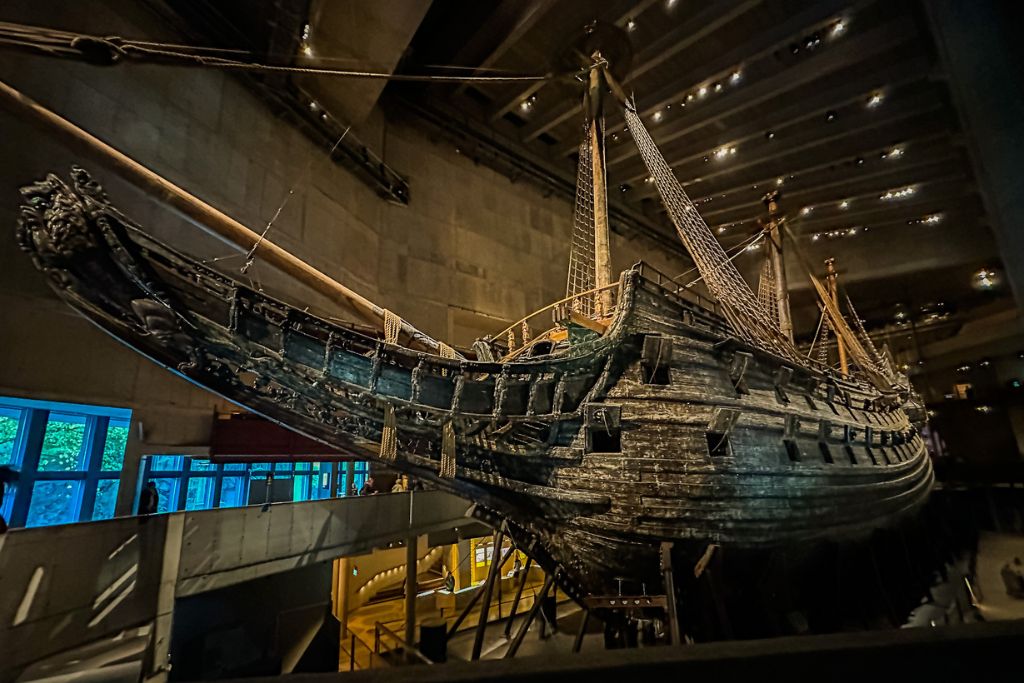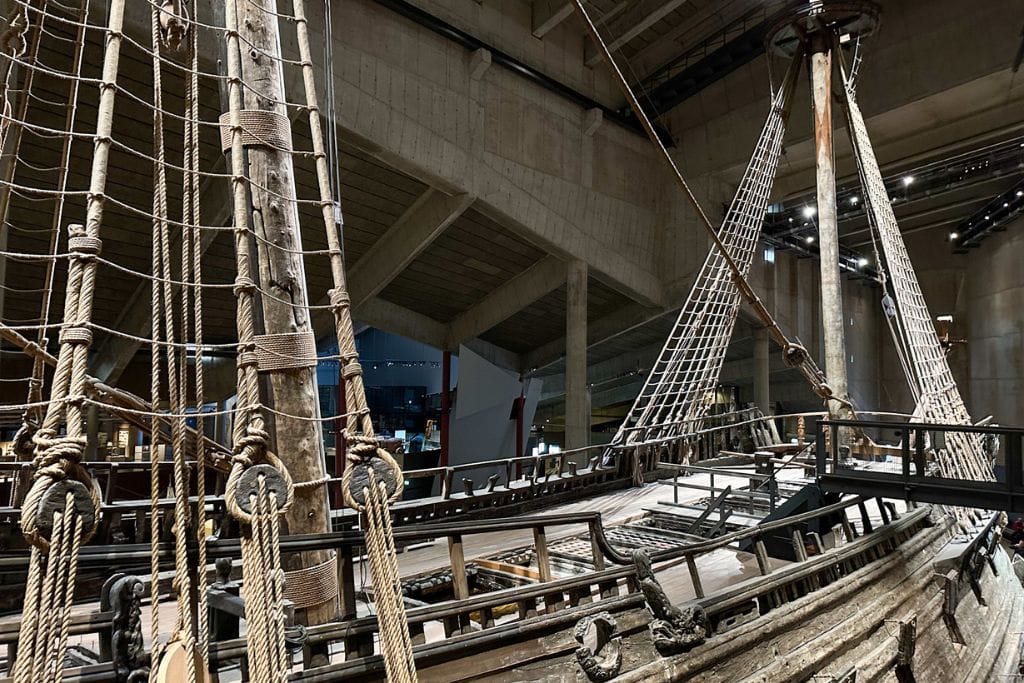Is the Vasa Museum in Stockholm Sweden Worth Visiting? (2024)
If you’re in Stockholm, Sweden for a limited amount of time, you may be looking for places to visit and see. Easily one of the most popular attractions in the city is the Vasa Museum. However, it’s not everyone’s cup of tea and you might be wondering if the Vasa Museum is worth visiting. In this post, I’ll detail my experience, give you an idea of what to expect, and hopefully help you decide if the Vasa Museum is worth your time and money!
Is the Vasa Museum Worth It?
With so much history, significance, and thousands of artifacts to see, I believe the Vasa Museum is definitely worth visiting. But, every traveler is different and has their own set of interests. Thus, to help you out, here are some scenarios in which I think it would be worth visiting the museum. These are based on the opinions of other travelers I met in Stockholm, as well as my own experiences!
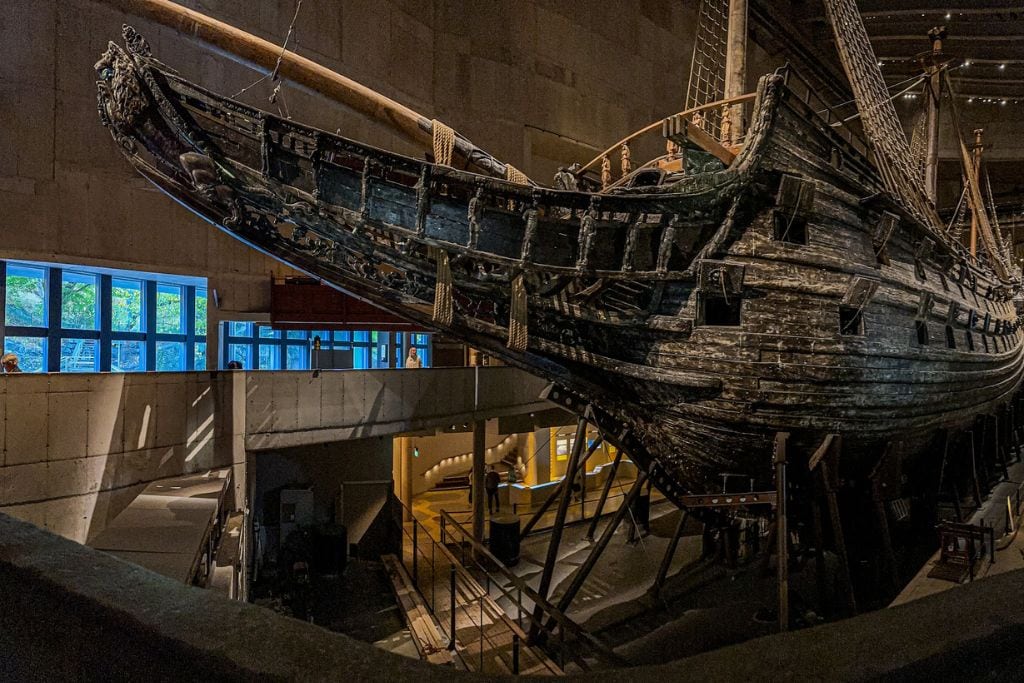
The Vasa Museum Is Worth Visiting If…
You love Nordic history. Maybe it’s just a Westerner thing or influence from the Netflix show The Vikings, but Nordic history absolutely fascinates me. And the Vasa does not disappoint. It gives us such an incredible amount of insight into Nordic history during this period. You won’t want to miss it if you’re even the slightest history buff.
Another case where Stockholm, Sweden’s Vasa Museum is worth it is if you like interactive museums. Unlike other art museums, where you mostly admire pieces from afar and create your own interpretation, this museum is interactive and grounded in factual knowledge. For example, there are models of the guns that were once on board that you can hold and feel the weight of. The museum also has a recreated section of the ship that allows visitors to feel what it would’ve been like walking around onboard. Let me tell you, it wouldn’t be fun if you were taller than 5’3″ or 160cm. 😅
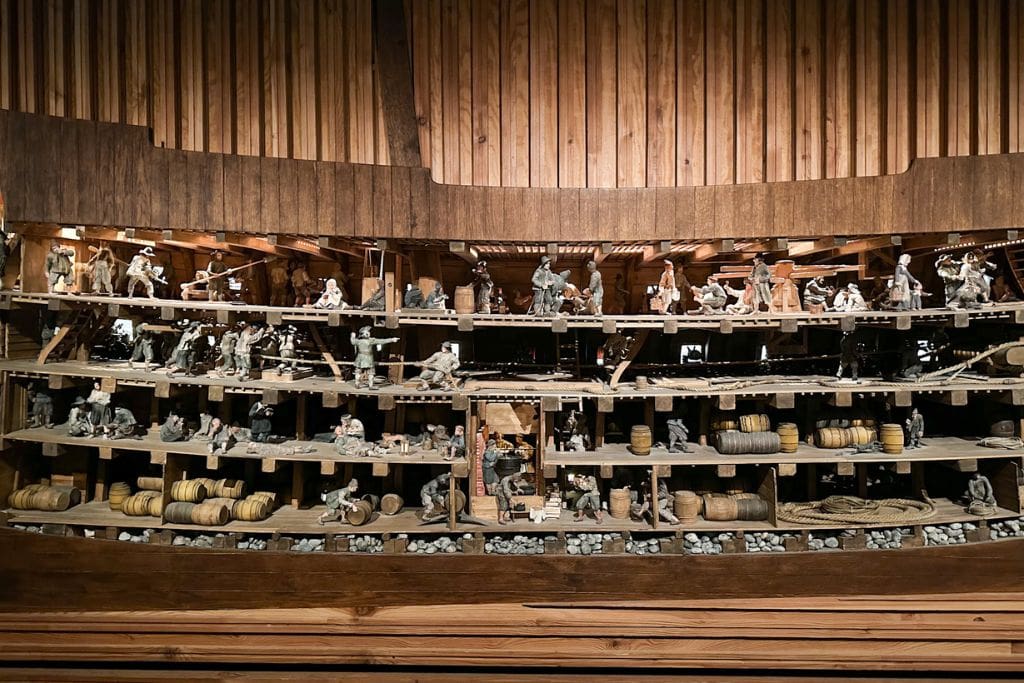
Last but certainly not least, the Vasa Museum is worth visiting if you appreciate original works. 98% of what you see of the ship is original, making it the most well-preserved ship of its time. Truly, it’s hard to fathom that something as old and large as the Vasa stands before us in such excellent condition.
⛵️Check out this guided tour of the Vasa Museum here!
🇸🇪 NOTE: You can also gain entry with the Stockholm Pass, which saves you money if you plan on visiting tourist attractions around the city. See the full list here.
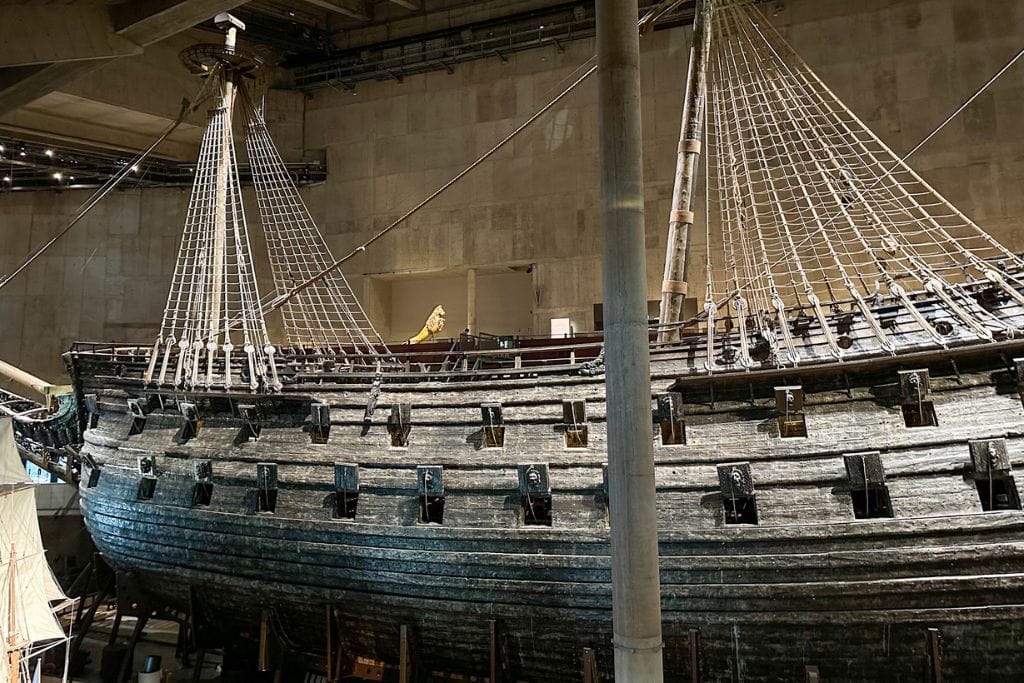
The Vasa Museum Is Not Worth Visiting If…
Aside from none of the previous scenarios applying to you, here are some additional cases in which you may want to skip this attraction.
The first scenario is that you don’t have the slightest interest in ships. I’ll be the first to admit that I have nearly no knowledge about ships other than that you want the ship to float. However, I find the history of salvaged treasures and their stories fascinating. If you’re someone who knows they don’t care about old ships, then the Vasa museum is likely not going to be worth it.

Some other cases would be you’re working on an extremely tight budget or you have super limited time. While Stockholm is pretty expensive compared to other European destinations, this museum costs a good bit of money. Thus, If you’re trying to save, finding some less expensive things to do around Sweden might be worth it. It’s the worst when you pay a good amount of money and can’t fully enjoy what you paid for because you’re short on time.
Again, these are just observations that I believe to be true. I encourage you to continue reading to learn more about the museum as it’ll only help you determine if the Vasa museum is worth it for you!
Why Is the Vasa Famous?
The Vasa is hugely famous for two reasons. For one, it is the only ship of its time, intricacy, and size to be fully salvaged. Secondly, it is a perfect time capsule from that one fateful afternoon.
For a quick history recap, the Vasa was built at the behest of King Gustav II Adolf, the King of Sweden. He wanted a new warship to fight against a special war with Poland during the 17th century. Why was there a war with Poland? Well… this is where it gets interesting!
The King of Poland, Sigismund III Vasa, was previously the King of Sweden. However, Sweden was a predominantly Protestant country, and Sigismund was Catholic. As such, he was eventually ousted from the Swedish throne…😬 To say the least, there were especially bitter relations between the two nations. As a result, everything about the Vasa was designed to send messages of King Gustav II Adolf’s rightful power.
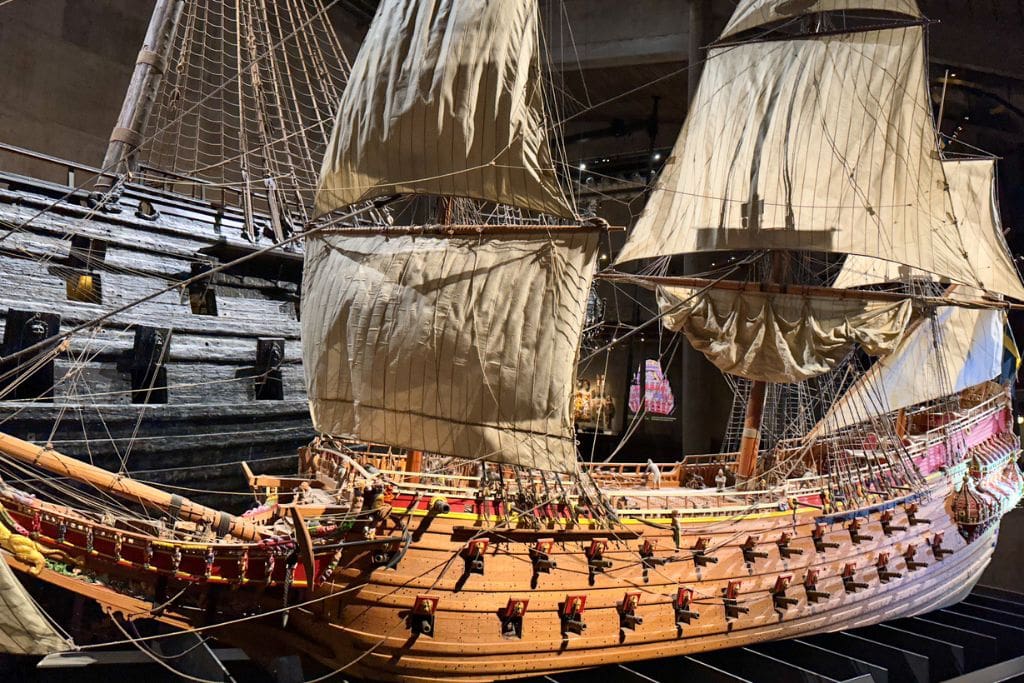
Everything from the ship’s four-story height and original striking red and yellow color to the adornment of more than 700 sculptures was designed as part of this message. In fact, the front of the ship, or beakhead, features a massive lunging lion with the Vasa family coat of arms. This both represents and is meant to connect King Gustav II Adolf to the greatest Roman emperor, Augustus. And, along the sides of the beakhead, are 20 statues of Roman emperors. Again, they were included to signal that King Gustav II Adolf was akin to the Roman emperors and would lead an empire.
At the end of the day, King Gustav II Adolf not only wanted the Vasa to strike fear in the enemy but also to remind everyone of his tremendous courage, bravery, and strength.
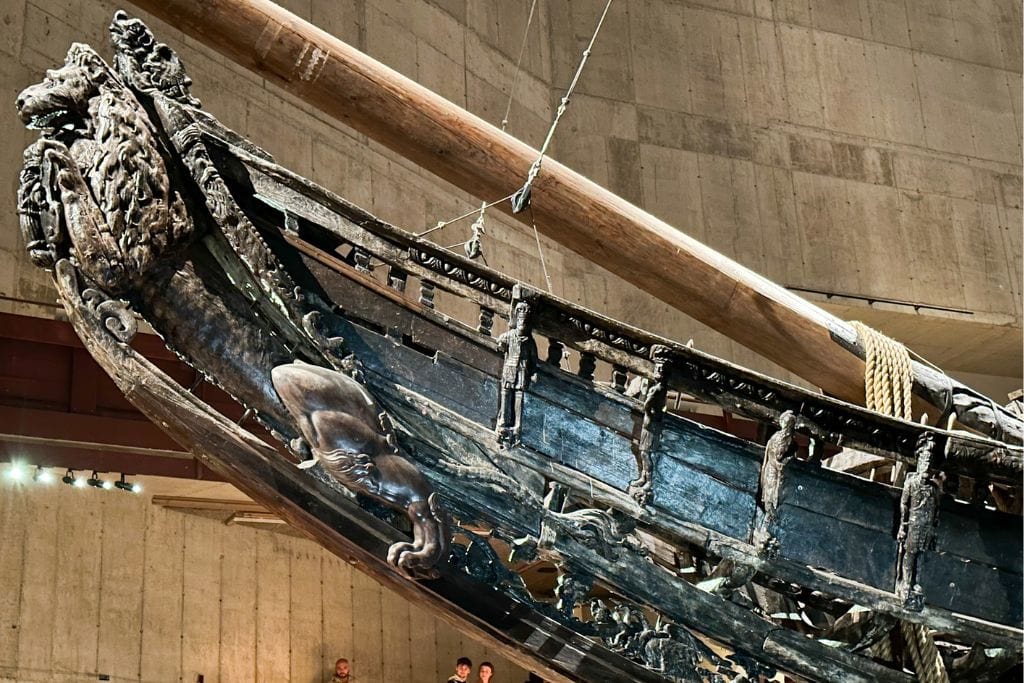
Why Did the Vasa Sink?
To put it simply, the Vasa sank because it was poorly designed and didn’t have enough ballast. For anyone like me who has next to no knowledge of sailing terms, ballast is material that’s used to provide stability. At the time, huge stones were stored at the bottom of the ship as ballast.
However, the problem was that the Vasa had a very narrow bottom. In turn, the bottom compartment wasn’t large enough to put the necessary amount of ballast below the waterline. Essentially, this meant the Vasa was top-heavy and anytime there was a decent amount of wind, the ship would tip to the side.
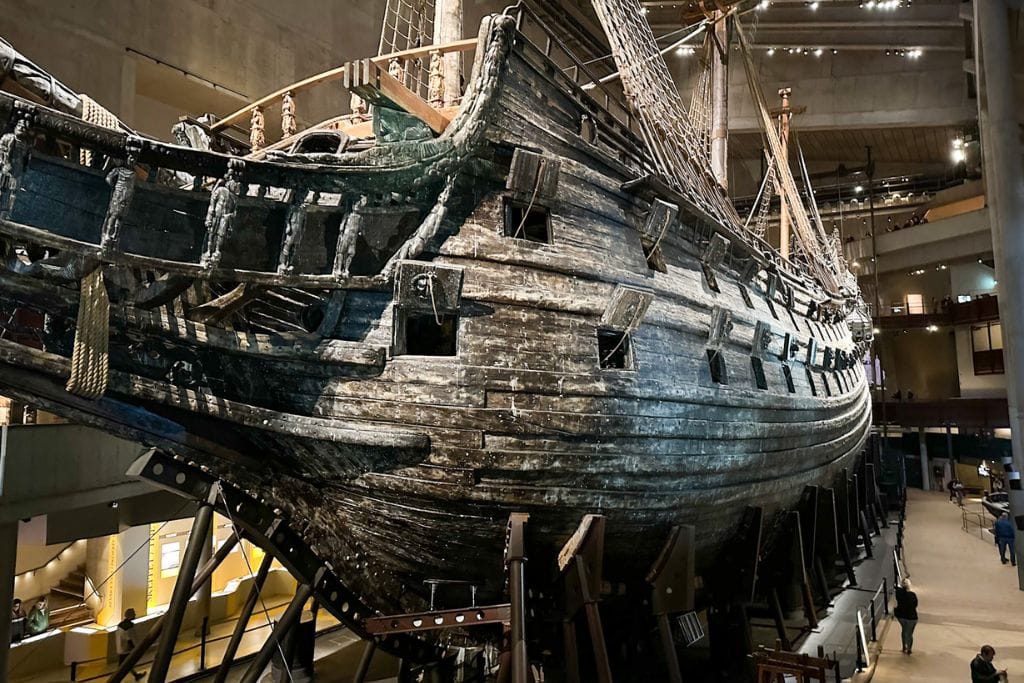
If you’re wondering why they didn’t run a trial run or realize this major flaw earlier, it’s because ships were built based on prior experience, not using math. Since a ship like this had never been built before, they didn’t know it was going to be so unstable.
Thus, on August 10, 1628, less than 2 nautical miles from the Stockholm shipyard and only 20 minutes into its maiden voyage, the Vasa sank. There was some wind, some argue a small breeze, that caused the ship to heel. Since the gun ports were open, water came flooding in and the boat flooded with water within minutes.

Could the Vasa Sinking Have Been Prevented?
Some people often wonder if the boat still would have sunk if the gun ports were closed. According to researchers, the boat likely would’ve sailed a bit further, but the boat was never truly seaworthy.
⛵️ Fun Fact: At the time, the King of Sweden ordered 4 ships to be built. One of the Vasa’s sister ships was built a meter wider at the bottom, which meant it could hold more ballast. This extra ballast is what allowed the sister ship to sail for 20 years, instead of 20 minutes.
How Many People Died on the Vasa?
In total, there were 30 victims who died on the Vasa. They got stuck below deck or were trapped under cannons and drowned. Researchers identified 15 distinct skeletons during the excavation process. And something that makes the Vasa Museum in Stockholm, Sweden especially worthwhile is that several of the skeletons of the victims are on display.
Unfortunately, there’s little known about the victims’ exact roles on the ship and their personal lives. Nevertheless, the museum tries to humanize each victim by giving them names. They even have detailed profiles for each victim, filled with information that researchers have been able to glean based on what was found near the bodies.
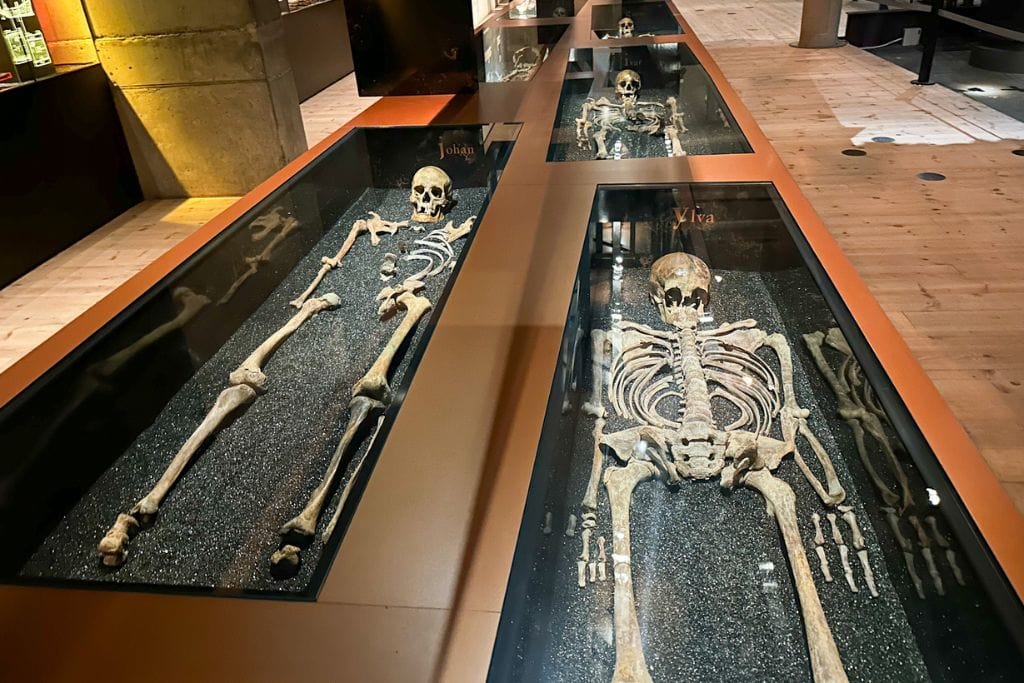
How Was the Vasa Excavated?
For 333 years, the Vasa sat undisturbed 30 meters underwater at the bottom of the Stockholm harbor. And, while there were some recovery efforts over the years, they were all unsuccessful and the Vasa was largely forgotten about.
It wasn’t until the 1950s when Anders Franzén made it his personal mission, that the location of the Vasa was determined. Without going into too much detail about the technique he utilized, he suspected he found the ship. Ultimately though, it was the royal arms located on the ship’s cannons that confirmed the discovery.

To retrieve the Vasa, thousands of holes left from the rusted bolts had to be plugged, and pumps were utilized to drain the water and mud to help lighten the ship. When the ship was ready, two salvage pontoons were used to slowly raise the Vasa from the bottom. Finally, in April 1961, people from all over the world tuned in on the TV and radio as the Vasa emerged from the depths of the Stockholm harbor.
And if you really think about it, it’s crazy to think that salvaging techniques from the 1950s were sophisticated enough to excavate a ship of the Vasa’s size, intricacy, and age without damaging it. For example, the ship was constantly sprayed with water to prevent the ship’s wood from drying out. And there were always large vats of water nearby to help with preserving the incredible piece of history. In total, a whooping 40,000 artifacts, sculptures, and finds were found.
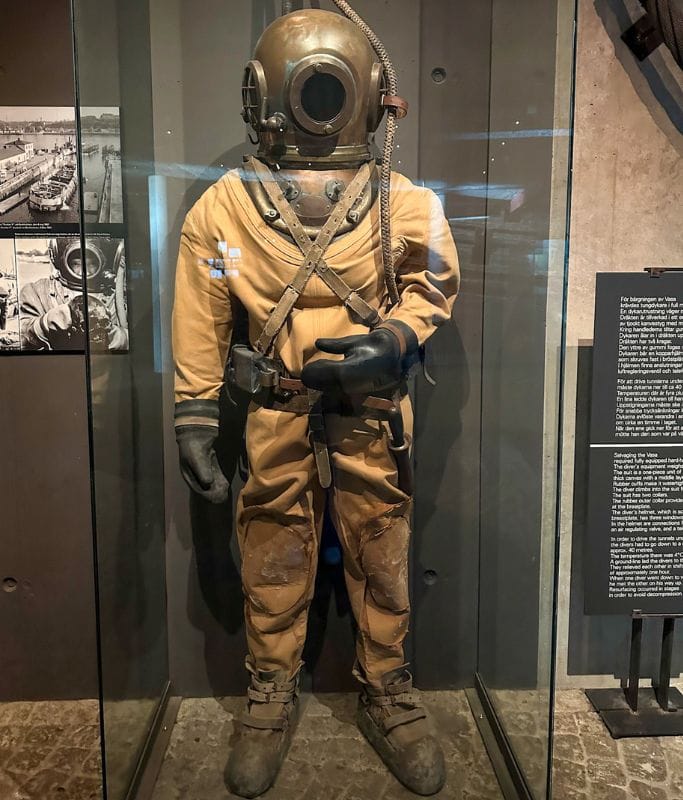
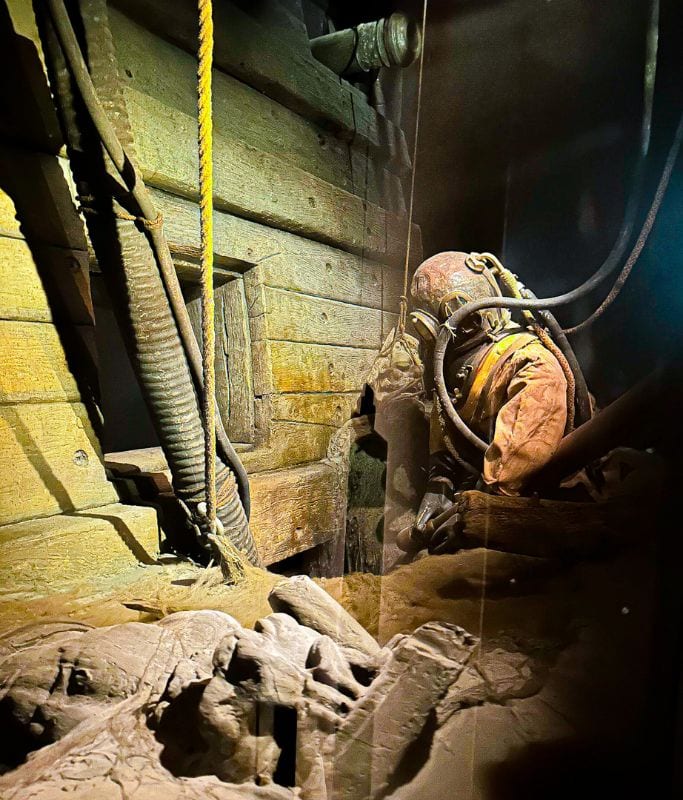
⛵️ Fun Fact: There was a hearing by a special council on Sept 6, 1628, to determine who to blame for the fiasco. But in the end, no one was convicted.
What Does the Vasa Museum Have?
Now that you know a decent portion of the Vasa’s history, let’s talk about what the Vasa museum has. When you enter the museum, the very first thing you encounter is the front of the Vasa. It’s honestly a little surprising because there’s no preface or anything. You immediately see this larger-than-life ship.
That said, something that is perhaps a little bit unexpected is how dark the ship is. Originally, the ship was full of color. However, after many years of sitting in brackish water and mud for hundreds of years, most of the color disappeared. And, while it’s a bit unfortunate that we can’t see the ship in all its immaculate glory, researchers attribute the better-than-expected state of the victims, clothes, and artifacts to the brackish water. It helped preserve the ship!
⛵️ Fun fact: The museum knows what color the original ship was because there are trace pigments still there.
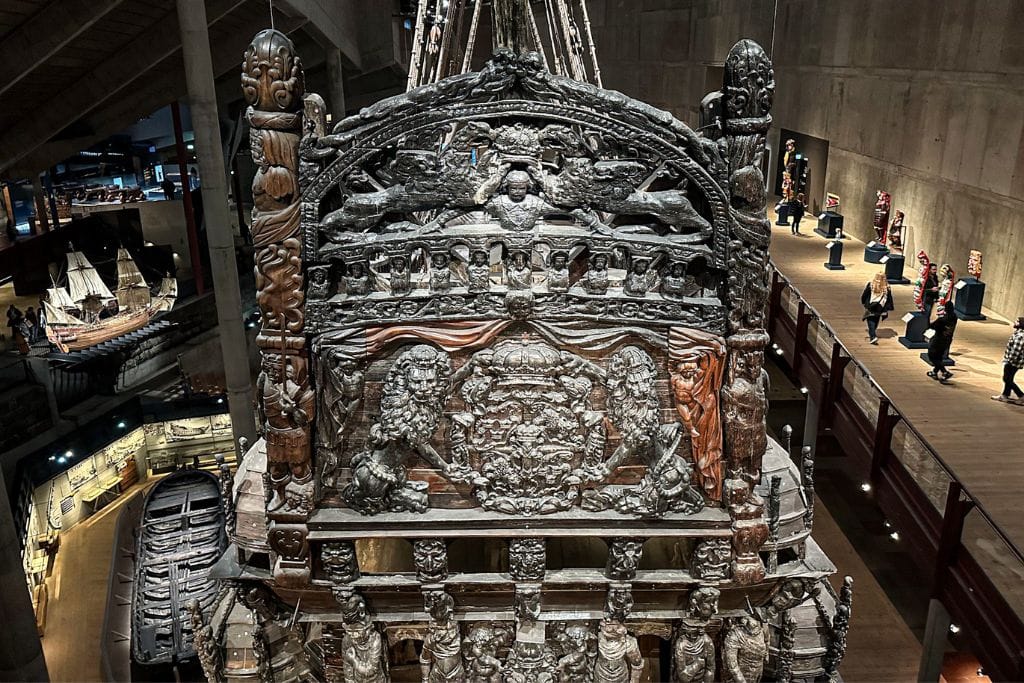
The museum is composed of 7 floors, but only floors 2 – 7 are accessible to visitors. Each floor focuses on a separate aspect of the ship and provides a different perspective of the spectacular ship. For example, guests receive the best view of the immensely detailed transom featuring original sculptures on floor 7. Meanwhile, you can learn all about ship life on floor 5.
There are also great exhibition rooms and videos that explain what happened following the sinking of the Vasa. Oh, and the museum offers a 17-minute film about the ship for free. I strongly recommend watching if you have time as it helped me understand the history and period!
General Info for Visiting the Vasa Museum
The Vasa museum is open daily, from 10 AM – 5 PM, except Wednesdays, when the museum is open for 3 additional hours, so it closes at 8 pm instead. It’s located on the island of Djurgården, which is about a 45-minute walk from Gamla Stan (Stockholm’s Old Town). Here is the exact address. You can purchase tickets on-site or online. Prices are as follows:
- 18 and under FREE
- 19 and above 170 SEK
I know the price might be higher than expected, but I would argue that it’s more than worth it if you can spend at least 2 hours at the museum. There’s also the option of joining a small-group tour, which includes your entry ticket and allows you to listen to a guide explain all the little details instead of spending hours reading info cards.
Or, if you are in town for a few days, I would recommend saving with a Stockholm City Pass. This grants you entrance to 50 of Stockholm’s most popular attractions and pays off if you visit 2-3 attractions with the pass. There are options yanno :’)
⛵️Check out this small-group tour of the Vasa Museum or the Stockholm City Pass
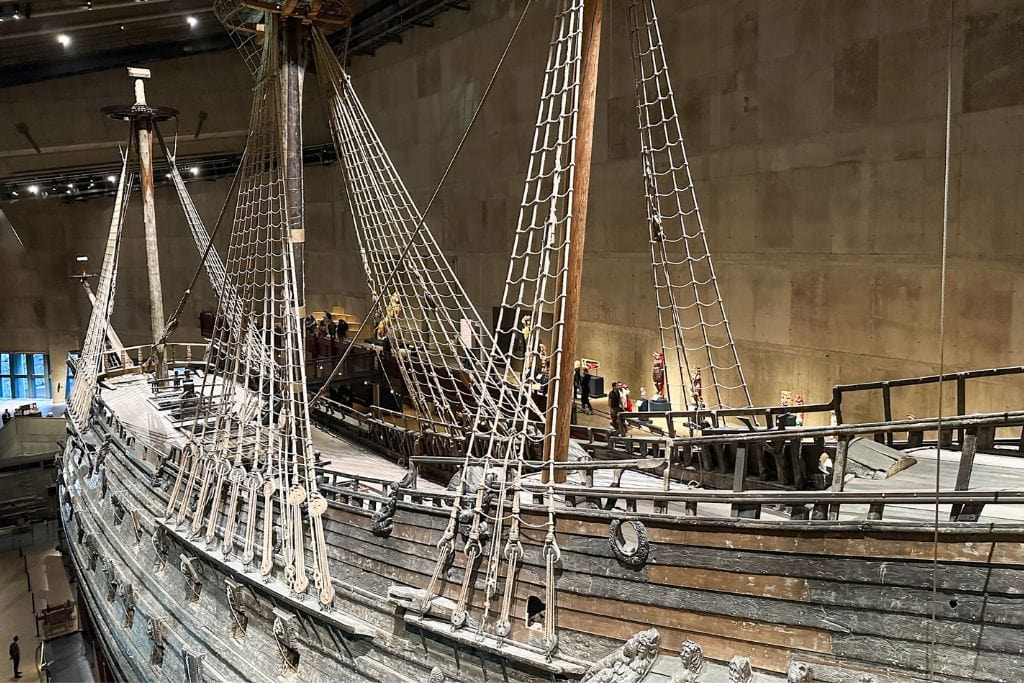
How Much Time Do You Need in the Vasa Museum?
To make the ticket price worth your money, I recommend spending at least two hours walking around the museum and observing the various artifacts.
For reference, I spent about 4.5 hours exploring all that the Vasa museum had to offer. Literally, I walked each floor, read about 80% of the informational signs, saw the 17-minute film, and took a guided tour. (If you can’t tell, I thoroughly enjoyed this museum and even surprised myself with how much I geeked out on it! 😅)
Of course, if you want to quickly see the museum, you can likely get through all of the floors in a little over an hour. You just won’t have time to read all the info cards. Or, if you’re super short on time, I recommend doing the free 20-minute guided tour that the museum offers. This will help better familiarize you with the Vasa’s story and then you can spend the rest of your time exploring on your own.
Where to Stay in Stockholm
In case you’re planning your trip to Stockholm and looking for places to stay, here are recommendations based on my experiences as well as my extensive research.
For reference on the different neighborhoods:
- Gamla Stan: is Stockholm’s historic Old Town. The buildings are very colorful and there’s a high concentration of restaurants and cafes to indulge in local food!
- Norrmalm: is like the business area of downtown Stockholm. You’ll find lots of nice restaurants, shops, cafés, and parks.
- Södermalm: is like the trendy part of Stockholm with lots of cafés and boutique shops and is located high up (elevation wise).
Low-Cost Stays
- Castanea Old Town Hostel: Super comfortable hostel in Gamla Stan | ⭐️ 9.5 / 10
- Best Western: 3-star hotel in Norrmalm (downtown Stockholm) | ⭐️ 8.1 / 10
Mid-Range Stays
- Hilton Stockholm Slussen: 4-star hotel in Södermalm | ⭐️ 8.4 / 10
- NOFO hotel: 4-star hotel in Södermalm | ⭐️ 9.6 / 10
Fancy Stays
- Hotel Frantz: 4-star hotel in trendy Södermalm | ⭐️ 9.1 / 10
- Grand Hôtel: 5-star hotel located right on the water | ⭐️ 9.6 / 10
You can also explore other places in Stockholm and check rates & availability with the buttons below.
⛵️ NOTE: I wrote a detailed post about staying at the Castanea Old Town Hostel if you would like to read an in-depth review of the hostel.

Is The Vasa Museum Worth It: FAQ
Unfortunately, visitors cannot walk on the Vasa. The ship may look robust after standing the test of time and lasting over 300 years in Stockholm’s harbor. However, the reality is that the Vasa won’t last forever. Therefore, experts are doing everything possible to preserve it for future generations. For instance, in 1979, they sprayed the ship with PEG, a chemical that replaces the water in the ship’s wood to improve the stability of the wood. More recently, they have replaced old bolts with stainless steel ones and removed old rust.
The good news is that the museum has multiple floors that offer varying vantage points for visitors to admire the magnificent ship. Sometimes, you feel as though you could stick your hand out and touch the ship! So it’s still a pretty surreal experience.
According to records from the time, there were initially almost 450 people onboard the Vasa. Over 300 of them were soldiers, and the rest were ship crew. When the ship went under, a little over 400 of them managed to escape. Most survivors were above deck and swam to safety or escaped via a small rescue boat.
I highly recommend visiting Skansen Museum, which is super close to the Vasa Museum, doing the super fun and affordable Ghost Tour through Gamla Stan, and exploring Stockholm’s waterways!
Wrap-Up: Is the Vasa Museum Worth Visiting?
As arguably the most popular tourist attraction in Stockholm, Sweden, I think the Vasa Museum is well worth visiting and wandering around for at least an hour or two! The historic ship has played a major role in connecting us to the 17th century, and despite its short life on the water, it has quite a remarkable story. Also, it remains one of the largest objects ever conserved and is one of the world’s largest jigsaw puzzles.
That said, it’s all about what your interests are. So, regardless of your decision, I hope this post has helped you determine whether Stockholm, Sweden’s Vasa Museum is worth visiting!
Read More About the Nordic Region
- 🇫🇮 Planning a trip to Helsinki, Finland? Learn how to best indulge in all the popular local foods! Or, read about how to ride the ferry to Tallinn from Helsinki.

